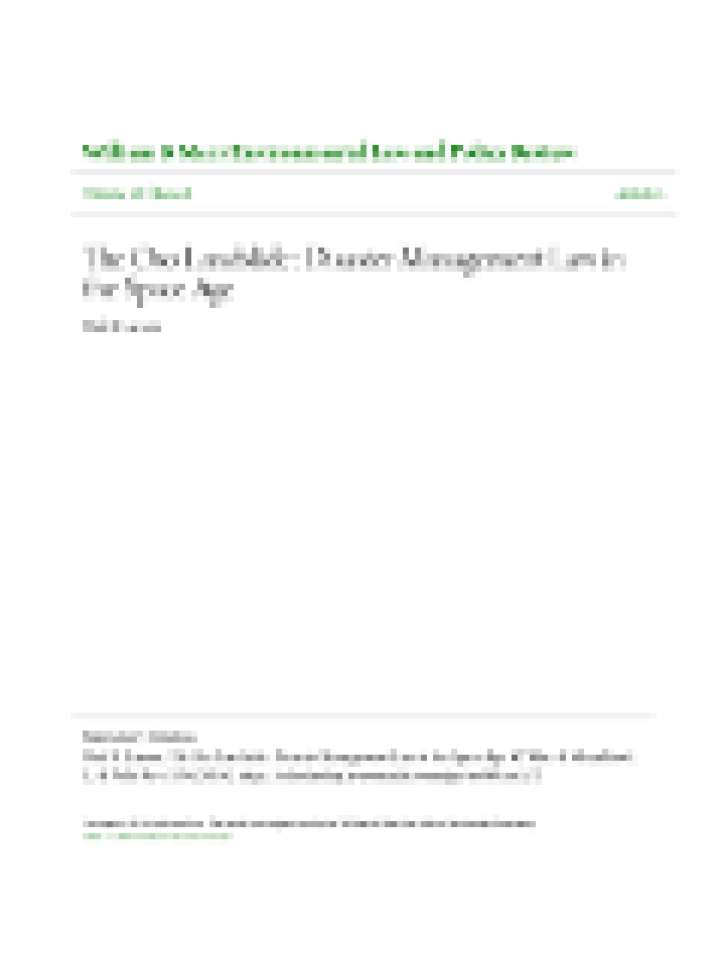The Oso landslide: disaster management in the space age
William and Mary Environmental Law and Policy Review, Vol 40, Issue 2, 2016
This paper describes two recent and similar landslide disasters and reviews what space-based international disaster tools were used in each case. One landslide is in a developed economy (the United States), the other landslide is in a developing economy (Sri Lanka). It discusses how outer space resources such as remote sensing and Global Navigation Satellite Systems (GNSS) can be activated for use at an early stage. It also evaluated the effectiveness of existing international authorities, such as the Group on Earth Observations (GEO), the UN Platform for Space-Based Information for Disaster Management and Emergency Response (UN-SPIDER) and the International Telecommunication Union (ITU) as well as non-governmental organizations (NGOs) which assist in disaster situations.
The paper finds that although the country with the developed economy could be expected to have more resources to deal with a disastrous landslide, it appears that neither of these countries was effectively proactive, and neither was prepared for disaster relief after the events. In disasters, typically the burden falls mainly upon local authorities and the people affected, or those living nearby, despite significant national and international resources that could be used to prevent disasters and to provide relief after they happen.
The paper provides recommendations for the greater use of international tools for disaster risk management in the United States. Additional recommendations are provided for international agencies and for three long-term strategies: Extensions of Tampere, World Trade Organization, and Customary International Law.
Explore further
